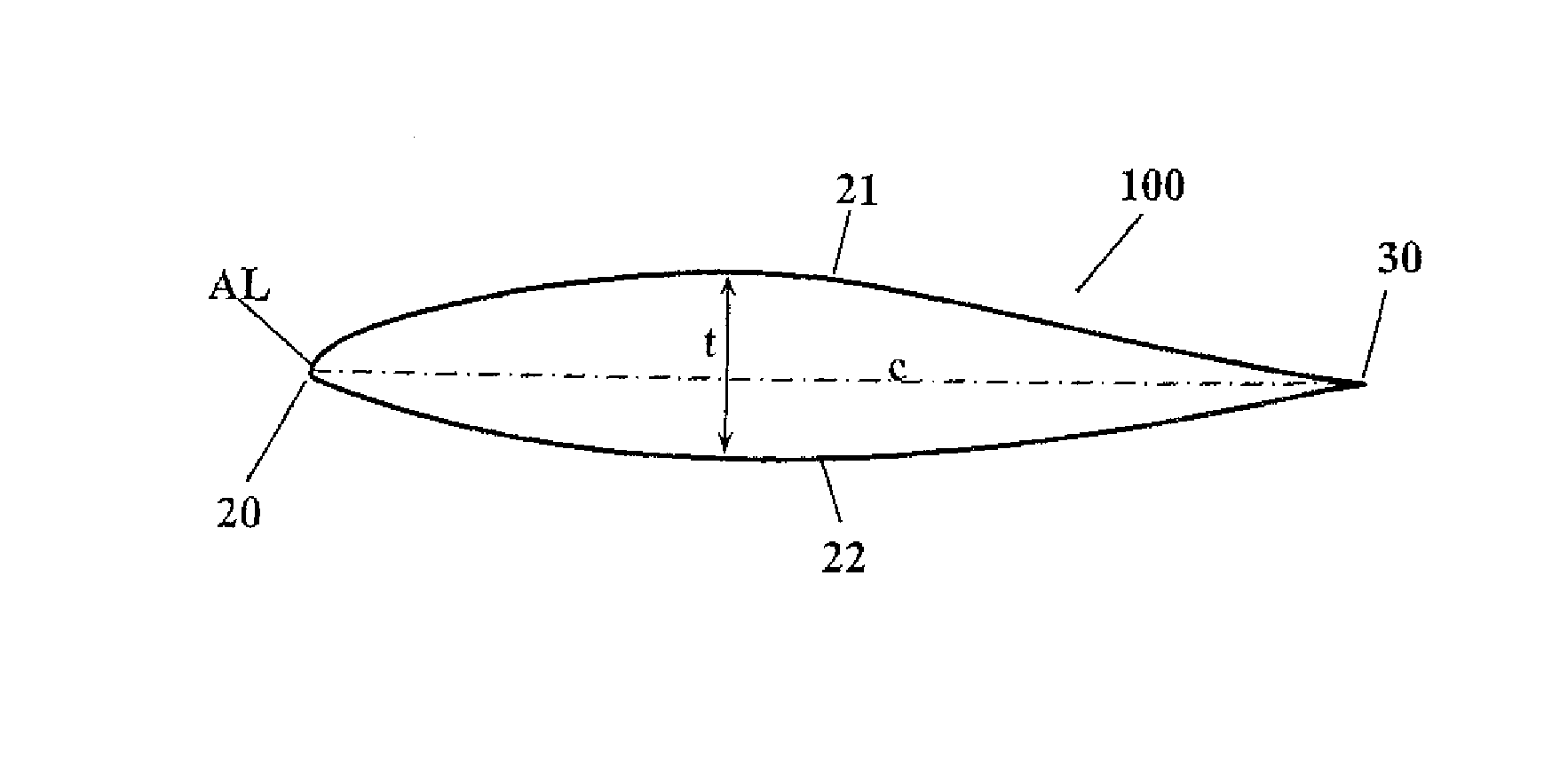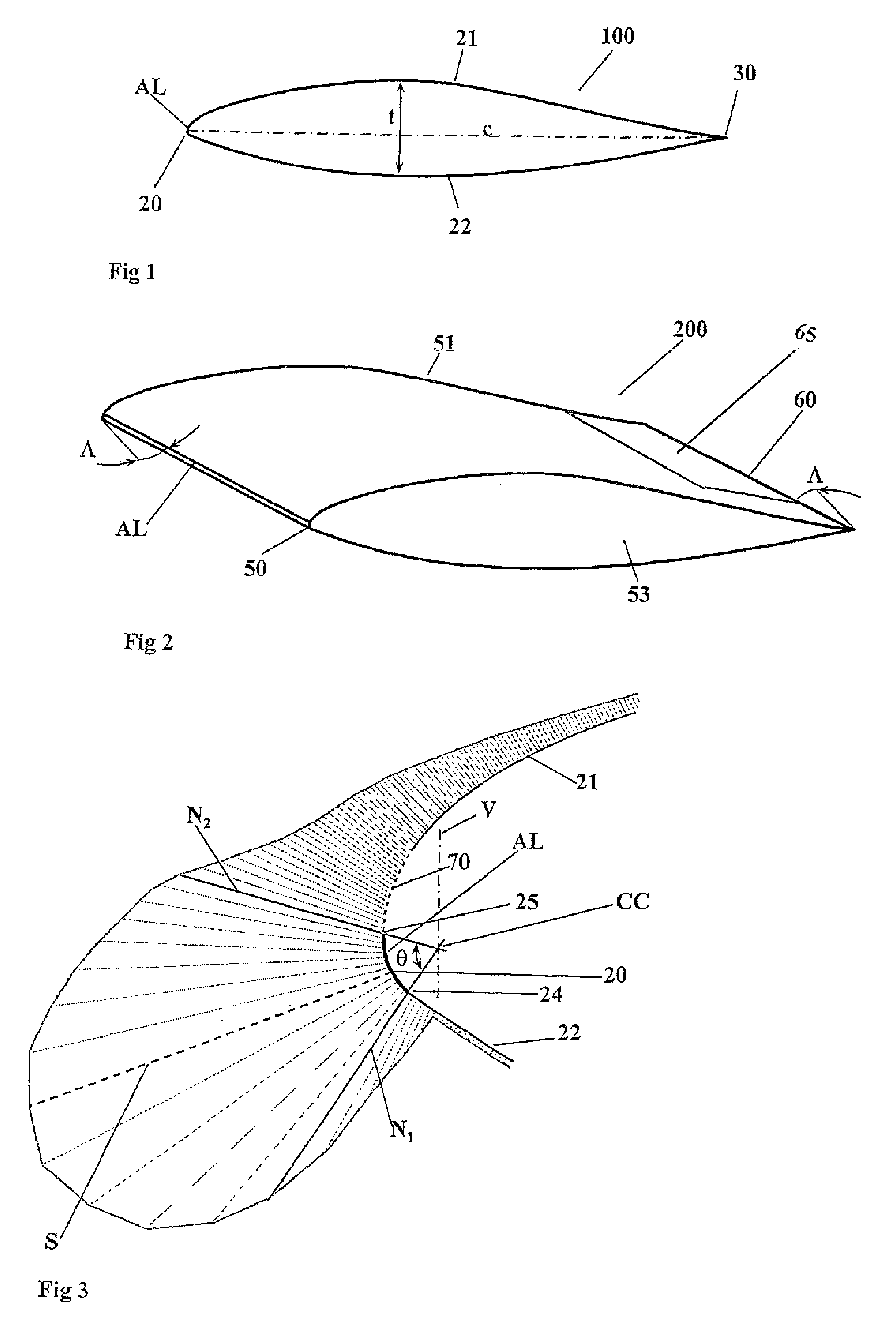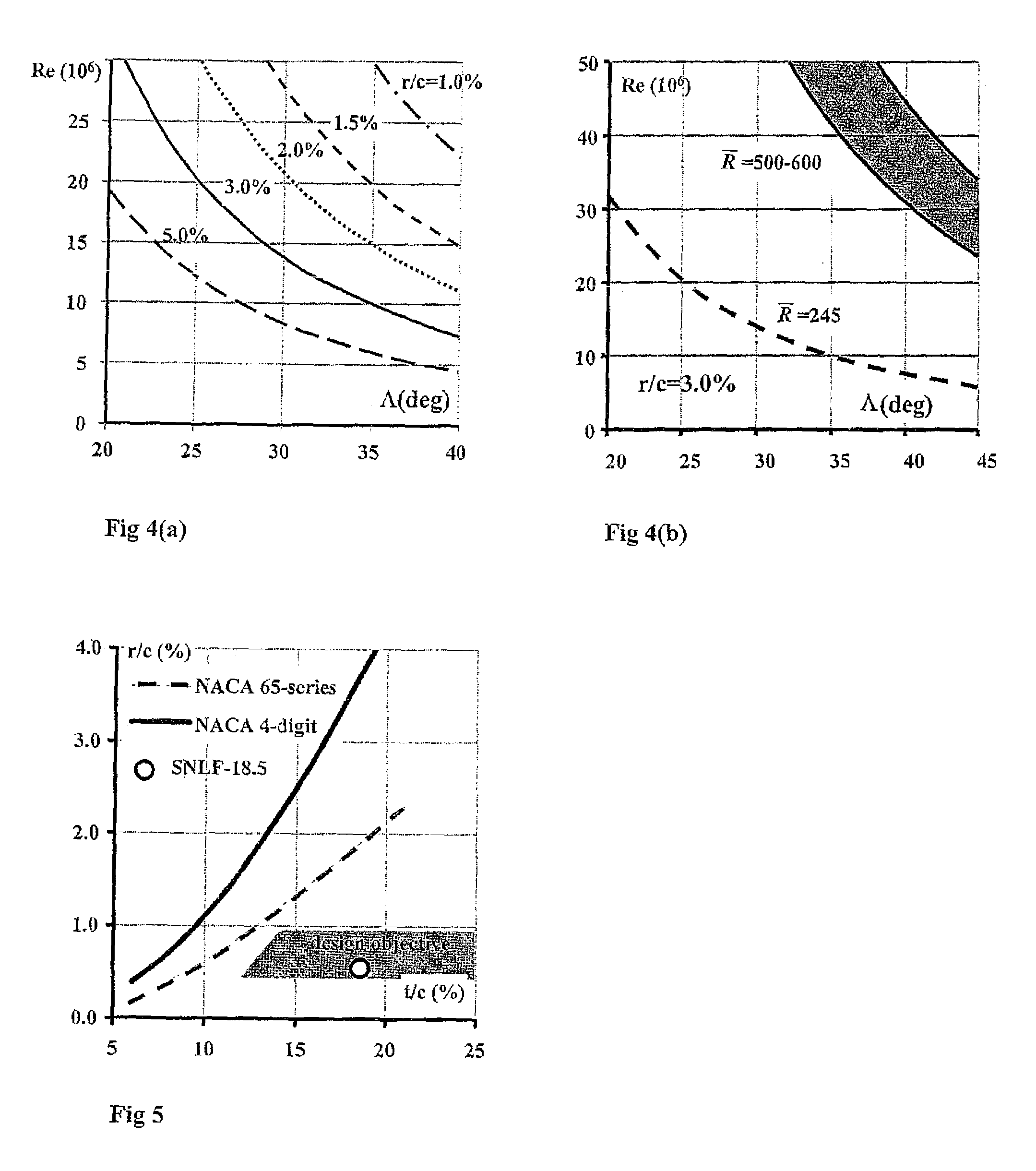Low-drag swept wings
a technology of swept wings and wing configurations, applied in the direction of wings, all-wing aircraft, wing adjustments, etc., can solve the problems of reducing the thickness ratio of aerofoils, affecting the flight path of aircraft, and affecting the flight path, so as to achieve the effect of low drag, increased and decreased angle of attack, and high thickness ratio
- Summary
- Abstract
- Description
- Claims
- Application Information
AI Technical Summary
Benefits of technology
Problems solved by technology
Method used
Image
Examples
Embodiment Construction
[0086]According to a first embodiment of the invention, and referring to FIG. 1, a Swept Natural Laminar Flow aerofoil (also referred to herein as an SNLF-type aerofoil) is provided, generally designated 100, comprising leading edge 20, suction surface 21, pressure surface 22, and trailing end 30, and the aerofoil 100 also defines a chord c and maximum thickness t.
[0087]Aerofoil 100 may be provided for any suitable subsonic or transonic swept wings, for example high lift wings of an aircraft, in particular fixed wing aircraft (including variable geometry winged aircraft, including for example “swing winged” aircraft). For the purpose of example, such an aircraft is described herein as a fixed-wing aircraft, comprising a regular subsonic / transonic configuration, having a fuselage section, main wings, tailplane, vertical stabilizer, and a propulsion system, but may instead include, mutatis mutandis, any other type of aircraft, for example: flying wing configurations, rotor-wing aircra...
PUM
 Login to View More
Login to View More Abstract
Description
Claims
Application Information
 Login to View More
Login to View More - R&D
- Intellectual Property
- Life Sciences
- Materials
- Tech Scout
- Unparalleled Data Quality
- Higher Quality Content
- 60% Fewer Hallucinations
Browse by: Latest US Patents, China's latest patents, Technical Efficacy Thesaurus, Application Domain, Technology Topic, Popular Technical Reports.
© 2025 PatSnap. All rights reserved.Legal|Privacy policy|Modern Slavery Act Transparency Statement|Sitemap|About US| Contact US: help@patsnap.com



